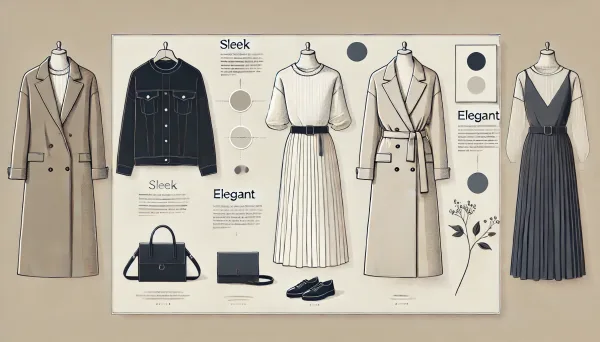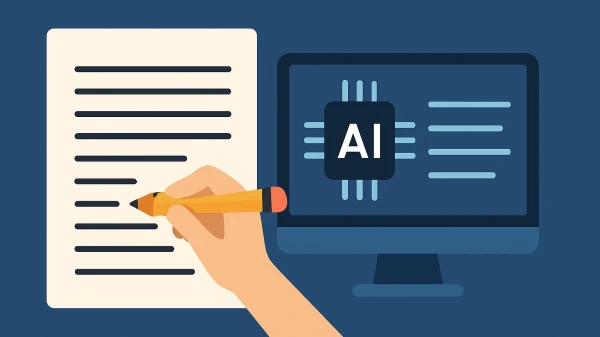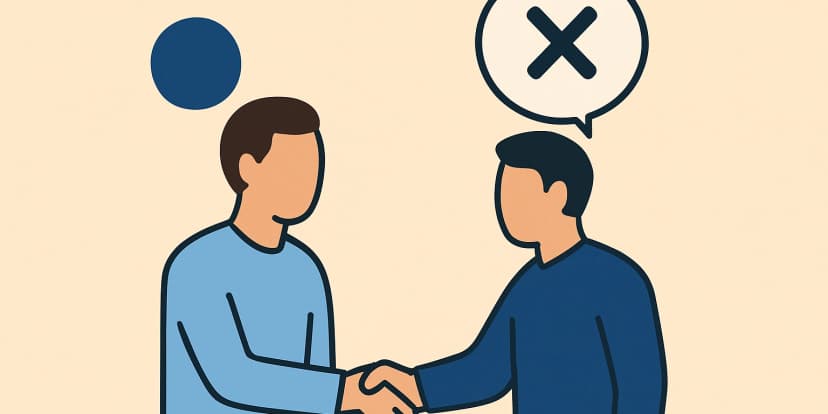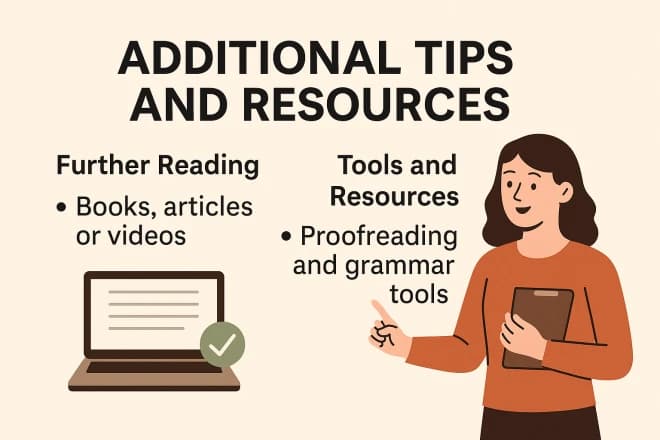Unlock Insights: Find the Answers You Seek on Our Blog
Learn How to Describe Clothes Effectively
By Evelyn Sterling
Welcome to the Clothing Description Guide!
This guide is here to help you master the art of describing clothing with precision and creativity. Whether you’re a fashion enthusiast looking to express your personal style, a writer aiming to bring characters to life through their outfits, or a marketer crafting engaging product descriptions, knowing how to describe clothes effectively is essential. It not only enhances your storytelling but also helps create clear, appealing visuals for your audience.
In this guide, you’ll find practical tips, essential vocabulary, and real-life examples to help you confidently describe any outfit or fashion item. From everyday wear to high-end fashion, we’ll show you how to combine details like color, style, and fit to craft descriptions that are both vivid and easy to understand. Let’s get started and unlock the power of detailed, compelling clothing descriptions!
Basic Vocabulary for Describing Clothing
Colors
Colors are one of the first things we notice when looking at clothes, and they can help set the mood of an outfit. Here are some common color descriptors to use:
- Primary Colors: Red, blue, and yellow are the basic colors everyone recognizes.
- Shades and Tones: These give more specific descriptions, like “navy” (a dark blue), “burgundy” (a deep red), or “charcoal” (a dark gray). These terms help make your description more vivid.
- Bright vs. Neutral: Colors like “vibrant yellow” or “electric blue” stand out, while neutral tones like “beige,” “gray,” or “white” are more subtle and versatile.
Using the right color word can help others imagine the outfit more clearly. Instead of just saying “blue jeans,” try “faded denim jeans” or “dark indigo jeans” for a more specific description.
Patterns
Patterns can make clothes stand out and add personality. Here are a few common ones to describe:
Classic Patterns:
- Stripes: Horizontal, vertical, or diagonal lines.
- Polka dots: Small, round spots arranged in a pattern.
- Plaid: A crisscross pattern, usually with squares or rectangles of different colors.
Modern Patterns:
- Abstract prints: Random shapes and lines that don’t follow a specific pattern.
- Tie-dye: Swirled or uneven color patterns, often with bright colors.
- Knowing how to describe patterns helps create a more detailed and interesting image of the clothes.
Materials & Textures
The fabric and texture of clothes are just as important as their color and pattern. Describing materials helps show the feel and quality of an item. Some common fabrics include:
- Cotton: Soft and breathable, often used for casual wear like t-shirts and dresses.
- Silk: Smooth and shiny, usually seen in formal or luxurious clothing like blouses or scarves.
- Denim: A strong, durable fabric, usually in blue, used for jeans, jackets, and skirts.
- Leather: A rich, tough material, often used for jackets, shoes, and accessories.
Textures add another layer to your description, showing how the clothing feels. For example, “smooth silk” feels soft to the touch, while “rough denim” has a more rugged feel. You could also describe items as “fluffy” (like a sweater) or “crinkled” (like a pleated skirt).
Using the right words for color, pattern, and material makes your descriptions more accurate and engaging!
Style and Fit Terminology
Style Categories
The style of an outfit helps define its overall look and where it’s appropriate to wear. Here are some common style categories you can use:
- Casual: Relaxed, everyday clothing, like t-shirts, jeans, and sneakers. Perfect for a day out with friends or running errands.
- Formal: Clothing for special occasions, such as suits, dresses, and evening gowns. Often worn to weddings, parties, or business events.
- Smart-Casual: A mix of casual and formal. Think dressy jeans with a nice shirt or a blazer over a simple blouse. Suitable for work, dinners, or casual meetings.
- Athletic: Clothing made for sports or exercise, such as yoga pants, running shorts, and gym tops. These are made from comfortable, stretchy materials.
- Vintage: Clothing that’s inspired by or directly from past decades, like the 1920s or 1980s. Often has a unique, nostalgic style.
- Bohemian (Boho): A free-spirited, artistic style often featuring loose-fitting clothes, ethnic prints, fringe, and earthy colors.
Knowing these style categories helps you describe not only the clothing but also the vibe or purpose of the outfit.
Fit Descriptors
Fit describes how a piece of clothing fits on the body. Here are some key fit terms:
- Loose: Clothing that hangs loosely from the body, offering a relaxed look.
- Tailored: Clothes that are fitted and shaped to follow the contours of the body, often for a more polished look.
- Slim: Tight-fitting clothes that are narrow around the body, like slim-fit jeans or shirts.
- Oversized: Clothing that is intentionally larger than normal, often creating a casual, comfortable look.
- Body-hugging: Clothes that fit very closely to the body, often showing off curves, such as form-fitting dresses or leggings.
Choosing the right fit for the occasion or your body shape helps communicate the style and comfort of an outfit.
Length & Silhouette
The length and silhouette of clothing also play an important role in describing its look. Here’s how to talk about it:
- Cropped: Clothing that is cut short, usually above the waist, like a cropped top or jacket.
- Mid-length: Clothing that ends around the knee or just below it, such as a mid-length skirt or dress.
- Floor-length: Long clothing that reaches the floor, such as a gown or maxi dress.
- A-line: A skirt or dress that is fitted at the waist and gradually flares out towards the hem, creating an “A” shape.
- Mermaid cut: A style of dress that is tight-fitting around the hips and thighs and then flares out at the bottom, often used in evening gowns.
These terms help provide a more specific image of the outfit, showing how it fits the body and where it ends. Whether you’re describing a formal gown or casual shorts, the length and silhouette give essential details about the overall look.
Adjectives That Bring Clothing to Life
Descriptive Words for Appearance
Using the right adjectives can make your clothing descriptions more vivid and interesting. Here are some common words to describe how clothes look:
- Elegant: Clothes that are stylish and graceful, often used for special occasions. For example, an elegant evening gown.
- Chic: Fashionable and smart, showing good taste. A chic outfit might include a trendy blazer and sleek pants.
- Bold: Bright and eye-catching, making a strong statement. Bold colors like red or unique patterns can make an outfit stand out.
- Vibrant: Full of energy and life, often referring to bright and lively colors. A vibrant dress in a sunny yellow can brighten up any room.
- Understated: Simple and not too flashy, showing subtle style. Understated clothing might use neutral colors and minimal decorations.
These adjectives help paint a clear picture of the clothing, making it easier for others to imagine how the outfit looks.
Quality and Condition
Describing the quality and condition of clothes gives more information about their feel and durability. Here are some useful words:
- Well-made: High quality and constructed carefully. Well-made clothes last longer and look better.
- Durable: Strong and able to withstand wear and tear. Durable fabrics like denim are great for everyday use.
- Pristine: Perfect condition, looking new and clean. A pristine dress has no signs of wear.
- Worn-in: Comfortable and soft from being used a lot. Worn-in jeans feel soft and fit better over time.
- Distressed: Intentionally made to look old or worn. Distressed jeans have a trendy, rugged look with tears and fading.
These terms help describe not just how the clothes look, but also how they feel and how long they might last.
Detail-Oriented Descriptors
Focusing on specific details makes your descriptions more interesting and precise. Here are some words to describe the finer aspects of clothing:
- Embellished: Decorated with extra details like beads, sequins, or embroidery. An embellished jacket might have sparkling beads along the sleeves.
- Lace-trimmed: Finished with delicate lace fabric. A lace-trimmed blouse adds a feminine touch to any outfit.
- Pleated: Features folds or creases in the fabric. A pleated skirt moves gracefully and adds texture.
- Ruffled: Has frills or gathers of fabric. Ruffled sleeves or collars give a playful and romantic look.
- Embroidered: Decorated with needlework or thread designs. An embroidered shirt might have intricate patterns or floral designs.
Using these detail-oriented descriptors helps create a richer and more accurate image of the clothing, making your descriptions more engaging and enjoyable to read.

How to Describe Clothes in Writing
Sentence Structure
When describing clothes, it’s important to use a clear and organized sentence structure. Start with the most noticeable features and work your way down to the smaller details. Here’s an example:
- Example: “She wore a sleek, black leather jacket with silver hardware.”
- Sleek (describes the style and smooth look of the jacket).
- Black (describes the color).
- Leather (describes the material).
- With silver hardware (adds detail about the jacket’s embellishments).
By arranging your description this way, you can give a clear, flowing picture of the outfit. Always try to include a combination of color, material, and style to make the description rich and complete.
Sentence Flow
To keep your descriptions interesting, it’s helpful to vary the order of your words. This helps avoid sounding repetitive and makes your writing more dynamic. For example:
- “She wore a loose, denim jacket with colorful patches” can be changed to “A loose denim jacket with colorful patches hung effortlessly over her shoulders.”
Changing how you arrange your words can make your writing feel fresh. Play around with the order of descriptors to see what works best!
Contextual Clarity
When you describe clothing, always think about the context in which the outfit will be worn. The description should match the occasion. For example:
- Formal: “He looked sharp in a tailored, navy suit with a crisp white shirt and polished shoes.”
- Casual: “She wore a comfy, oversized hoodie with ripped jeans and sneakers.”
- Professional: “He dressed in a smart-casual blazer over a plain shirt, perfect for the office.”
Understanding the occasion helps you choose the right words. Describing clothes for a wedding will sound very different from describing clothes for a weekend outing. Matching your description to the situation helps paint the right image for the reader.
Real-Life Examples
Everyday Scenario
Describing outfits for everyday situations can be simple but effective. Let’s say you’re meeting friends for coffee or heading to work. Here’s how you can describe your outfit:
- Casual Meetup: “I threw on a cozy, light gray hoodie, paired with ripped jeans and comfy white sneakers. The perfect outfit for a laid-back afternoon with friends.”
- Work Setting: “I wore a tailored, navy blazer over a crisp white blouse, paired with black dress pants and polished loafers. It’s a smart, professional look for the office.”
In both cases, you can easily describe the key elements: the style, color, and fit of the clothes, and how they match the occasion. This gives the reader a clear picture of what the outfit looks like and how it suits the environment.
Fashion Blog/Product Descriptions
When writing for a fashion blog or describing products online, it’s important to be both descriptive and appealing. Here’s how you might describe a product on a fashion website:
- “This sleek, black leather jacket is a must-have for any wardrobe. With its fitted cut and silver zippers, it adds an edgy yet elegant touch to any outfit. Perfect for a night out or a weekend adventure.”
By including details like material (leather), color (black), and style (fitted with silver zippers), you help customers visualize the product. You also highlight how the item can fit into their lifestyle, making it more desirable.
Storytelling
Clothing descriptions in storytelling can reveal a lot about a character or set the mood of a scene. For example:
- Character Trait: “Her soft, cream-colored cardigan was buttoned up to her neck, contrasting sharply with her bright red lipstick. It was as if her quiet, reserved nature was wrapped up in layers, hiding her true boldness.”
- Setting Atmosphere: “The ballroom shimmered with floor-length gowns in every color of the rainbow. The golden chandeliers above reflected off the sequins of the dresses, casting a warm glow over the guests as they swirled across the polished floor.”
In both examples, the clothing isn’t just about fashion—it helps tell the reader more about who the character is or what the atmosphere feels like. By describing outfits in detail, you can make your characters or settings feel more real and immersive.
Practical Tips and Exercises
Observation Exercise
One of the best ways to improve your clothing descriptions is by observing the outfits around you. Take some time to look at your friends, people on the street, or even magazines and online catalogs. Pay attention to the details like color, style, and fit.
- Example: Observe a friend’s outfit. You might notice, “She’s wearing a loose, light blue denim jacket with silver buttons, paired with black leggings and white sneakers.”
Tip: Jot down these observations in a notebook or on your phone. The more you practice noticing details, the easier it will be to describe clothes clearly and accurately.
Practice Writing
Writing short paragraphs about outfits can help you put what you’ve learned into practice. Try describing your own clothing or items you see in store displays.
- Example: “Today, I’m wearing a cozy, oversized sweater in soft beige, with dark green joggers. The sweater is perfect for chilly weather, and the joggers are comfortable enough for a lazy Sunday.”
- Tip: Focus on using a mix of color, fit, material, and style. This will help you create a full, clear picture for your reader. You can also challenge yourself by describing an outfit in different ways, focusing on different aspects like texture or mood.
Listening & Speaking
Verbal practice is just as important as writing. Try talking to friends about what they’re wearing or describing outfits you see in stores or on TV. This will help you become more confident in describing clothes in real-time conversations.
- Example: You could ask a friend, “I love your jacket! It’s so sleek and modern. What’s it made of? It looks like leather, but the texture is so smooth.”
- Tip: Focus on being clear and specific. Don’t be afraid to ask questions or use new words you’ve learned. The more you practice speaking about clothes, the easier it will become to describe them accurately and with detail.
These exercises will help you build your vocabulary and become more comfortable describing clothes in any situation. The more you practice, the more natural it will feel!
Common Mistakes and How to Avoid Them
Repetition
One common mistake is using the same adjectives over and over again, like “nice,” “cool,” or “pretty.” While these words are fine, they can get boring and don’t offer much detail. Instead, try to vary your adjectives to give a clearer and more interesting description.
- Example: Instead of saying “a nice blue shirt,” you could say, “a soft, sky-blue shirt with a relaxed fit.” This gives more detail and makes your description more engaging.
- Tip: Challenge yourself to use different words for similar qualities. For example, try using “elegant” or “chic” instead of “nice” for something stylish, or “bright” or “vibrant” instead of “cool” for colors.
Overdoing It
Another mistake is piling on too many descriptors. When you add too many details, your sentence can become crowded and hard to follow. For example:
- Example: “She wore a bright, shiny, red, tight, stylish, elegant, long, satin dress with delicate lace trim and beautiful sequins.”
While this sentence has a lot of good details, it’s too much for one sentence. It can overwhelm the reader. - Tip: Focus on the most important details. You don’t need to describe every aspect of an outfit in one sentence. Choose a few key descriptors that help paint a clear picture and make your description stand out.
Off-Topic Details
Sometimes, it’s easy to go off on tangents and add details that aren’t relevant to the clothing itself. For example, describing the weather or the person’s mood can be interesting, but it won’t help describe the garment.
- Example: “She wore a tight, black leather jacket because it was cold outside and she was feeling a little sad.” This description is too focused on the external context and doesn’t tell us much about the jacket itself.
- Tip: Stick to relevant details that describe the garment, like its color, style, material, or fit. Avoid adding too many outside details unless they help explain why the outfit works or stands out.
By avoiding these common mistakes, you can make your clothing descriptions clearer, more engaging, and more effective!
Conclusion
Describing clothes well is all about using the right words to paint a clear and interesting picture. By choosing precise vocabulary, you can make your descriptions more vivid and engaging. It’s important to balance clarity and creativity—being clear helps others understand exactly what you mean, while creativity makes your descriptions more enjoyable to read. Remember to use a variety of adjectives, focus on the most important details, and stay on topic to keep your descriptions effective and appealing.
Now that you have the tools to describe clothes effectively, it’s time to put them into practice. Try experimenting with new words to expand your vocabulary. Pay attention to how fashion is talked about in magazines, blogs, and on TV to learn new descriptive language. Keep practicing by writing about your own outfits or the clothes you see around you. The more you practice, the more confident you will become in your ability to describe clothing clearly and creatively. Keep observing, writing, and speaking about clothes, and you’ll continue to improve your descriptive skills!
By following these steps, you’ll be able to describe clothes in a way that is both accurate and interesting, whether you’re writing for a blog, creating product descriptions, or simply talking with friends about fashion.
AI Tools Categories
Browse all AI tools by category
All AI Tools
229Amazon
5AI Writing Generator
85Article & Content Writing
35Branding & Identity
54Content Generation
170Creative Ideas
32Educational Resources
34E-commerce
14Etsy
6Events & Celebrations
13Facebook
6Gaming & Fun
5Instagram
3Lifestyle & Personal
8LinkedIn
6Marketing & SEO
40Poem & Lyrics Writing
19Professional Documents
31Social Media
44Story & Book Writing
49Text Effects
14TikTok
7Twitter
3Writing Enhancement
36YouTube
11
Highly rated and most popular AI tools curated by our experts
Recently added AI tools that are gaining traction
- AI Post Generator

- AI Bullet Point Generator

- AI Discussion Post Generator

- AI 2 Weeks Notice Letter Generator

- AI Content Creation Ideas Generator

- AI Radio Ad Script Generator

- AI Podcast Script Generator

- AI Resume Objective Generator

- AI Resume Headline Generator

- AI Password Generator

- AI Snapchat Caption Generator

- AI Snapchat Username Generator

- AI Pinterest Board Name Generator

- AI LinkedIn Experience Description Generator

- AI Twitter Hashtag Generator

- AI YouTube Short Idea Generator

we prioritize displaying the latest content closely related to the current blog post.







